
Sydney startup GoFar launches Kickstarter to help drivers save money on petrol
Airtasker’s $6.5 million capital raise shows that Chinese VCs have a taste for Aussie startups

Startup CasaStudent wants to help international students find accommodation through trusted providers

Drone delivery startup Flirtey begins to commercialise its offering as it considers Series A funding

In Europe, all signs indicate that the use of drones is not going to be made legal until 2016. In fact, Flirtey was recently asked to submit a proposal to parts of Eurpoean Governments around the frameworks of how drone delivery could work across their countries and the recommendations that came out of that proposal were to adopt the framework that Flirtey suggested - which was a risk-based approach to the regulation of drones.
Then there's the United States; and based on how the FAA has been talking about drone technology, the best estimate is that it will start to become legal around 2017. There is a perception that Australia is also one of those countries that is behind when it comes to looking at drone technology. However, this is false.
Australia is actually quite ahead of the world having legalised commercial drones back in 2002, making it years ahead of the rest of the world in this space. It's worth noting though that regulatory innovation has slowed down in this space over recent years. In Australia, there is a distinction between "hobbyists" and "commercial operators"; this plays a major role in adding roadblocks to companies like Flirtey being able to really do the testing they need. As such, New Zealand has been the best place to launch operations from.
"New Zealand's attitude is, it doesn't necessarily matter if you're a hobbyist or if you're a commercial operator. What matters is how risky your drone operations are and what policies and procedures and technologies you have in place to mitigate that risk," said Sweeny.
The likelihood of Australia catching up in terms of this type of regulation is high, especially as the European Union begins to roll out its framework next year.One thing that's becoming increasingly obvious about Flirtey is that, from both a design perspective and a regulatory knowledge point of view, it is years ahead of what could be perceived as its closest competitors - Google and Amazon.
For starters, Google has reportedly 'canned' a lot of the work they have done after trialling their "Project Wing" drones in Australia due to coming to a conclusion that the drone design was inadequate. Amazon, who on face-value, seem to be a little more serious about the space announced they were going to trial "Amazon Prime Air" in India. A few days after the announcement, the Indian Government said it was banning the use of commercial drones.
Flirtey's strategy in working with government agencies to be part of the regulatory process is a strategy that has placed them in a more powerful position than other would-be major players in the space, something that should be getting far more attention than it is.
Transforming four main industries with drone technology
The vision at Flirtey is to transform four industries through the use of drone technology. Those industries are Humanitarian, Online Retail, Food and Courier Delivery. Initial commercial drone trails in New Zealand were a success; one was with TradeMe, one of the country's largest online retailers; and the other was with New Zealand Search and Rescue (LandSAR) where Flirtey demonstrated the company's ability to deliver urgent medical supplies by drone. "The thing we did, a delivery for two-way radios and first aid kits for NZ Land & Search Rescue, was at a location called Roxburgh on the South Islands. There's a river running up between it so a human being physically couldn't get access without going from car to foot, to boat to foot to get there. A drone just flies as crows fly and gets there within a couple of minutes, so in terms of scenarios where you have to deliver a defibrillator or a first aid kit or two-way radio or urgent medical supplies, I think that drones are uniquely placed to provide that urgent care," says Sweeny. When it comes to food, Sweeny revealed to Startup Daily that Flirtey has just signed a deal with a fast food company in New Zealand, although due to a confidentiality agreement, was unable to reveal the name of the company. Essentially, this means that Flirtey drones will start being used to deliver food items like burgers, fries and a coke from stores to customers in the local areas surrounding those stores. The roll-out will start in suburban areas before being available in cities - most likely because drop-offs will be easier to do at houses than apartment buildings at this stage. The business model that Flirtey operates on is by selling itself as a "drone delivery service" for the four above-mentioned industries. It is not the company's intention to sell drones; in fact, I couldn't imagine too many companies wanting to do that at all, especially because there would be insurance and maintenance costs that would be well above what business owners would be willing to invest. The startup thus provides drone delivery as a service on behalf of customers and manage the chain of events that go along with it, from picking up the package to delivering the package. While the drones are autonomous and run missions based on GPS, there is always a human operator in the loop from a central Flirtey control point.When it comes to the courier delivery industry, Flirtey's view is that drone delivery technology could be the next solution for postal organisations in Australia and around the world. It would certainly allow them to introduce a faster service to people who may want their letters or packages urgently for a premium cost.
Given Temando is a major player in the delivery space - Neopost invested $50 million into the company recently - and is an investor in Flirtey, I believe there will be some major developments that will happen in this space. This is also because New Zealand Post is one of the most innovative postal services in the world, and because Neopost is so heavily influential as a company across Europe.
In addition to its commercial testing efforts, Flirtey is also in the early stages of looking at a new investment round to help it keep up with its growth plans and compete on the world stage. The iteration of product and investor talks will most likely happen in parallel.
"We haven't disclosed exact numbers on what we are looking for," said Sweeny. "But when you look at the hottest drone startups in Silicon Valley, they're raising Series A rounds of around the $10 million mark."
Then, of course, there are other companies like Skycatch which also closed a $13.5 million Series A not too long ago. The advantage that Flirtey has above many of its other Silicon Valley competitors is it has signed customers. Without an extraordinary amount of funding, it has been able move beyond theory and testing to using the technology as a real-world application.
"I think that Flirtey and drone delivery technology is going to be transformative because not only will it save lives but it will transform lifestyles. I think we're at a point on the technology curve where this is just starting to become ubiquitous and I think that Flirtey is in a very exciting place to lead the world in that charge," said Sweeny.
Featured image: Matt Sweeny, Co-Founder, Flirtey.
Zenefits raises $500 million for its HR software and insurance hybrid, beating off new customers ‘with a stick’

Chinese online sanitary pad startup Honeymate raises million-dollar pre-A round

muru-D Class Two Demo Night: Over $2.6 million in revenue generated by the startups in the last six months

 The CrowdSourceHire Team[/caption]
CrowdSourceHire
Founders: Desmond Hang, Ben Liau and Rajnish Kumavat.
CrowdSourceHire's platform allows businesses to assess the technical skills of professional hires by crowdsourcing industry experts to vet and validate their candidates. While the difference between the free and premium version of the site could have been explained a little better, CrowdSourceHire have achieved global validation of their product and a move into the South East Asian region is on the cards for them. The startup has completed projects for over 124 companies so far including departments within Telstra and Sony as well as Grab Taxi, one of the fastest growing companies in Asia right now.
[caption id="attachment_40573" align="aligncenter" width="600"]
The CrowdSourceHire Team[/caption]
CrowdSourceHire
Founders: Desmond Hang, Ben Liau and Rajnish Kumavat.
CrowdSourceHire's platform allows businesses to assess the technical skills of professional hires by crowdsourcing industry experts to vet and validate their candidates. While the difference between the free and premium version of the site could have been explained a little better, CrowdSourceHire have achieved global validation of their product and a move into the South East Asian region is on the cards for them. The startup has completed projects for over 124 companies so far including departments within Telstra and Sony as well as Grab Taxi, one of the fastest growing companies in Asia right now.
[caption id="attachment_40573" align="aligncenter" width="600"]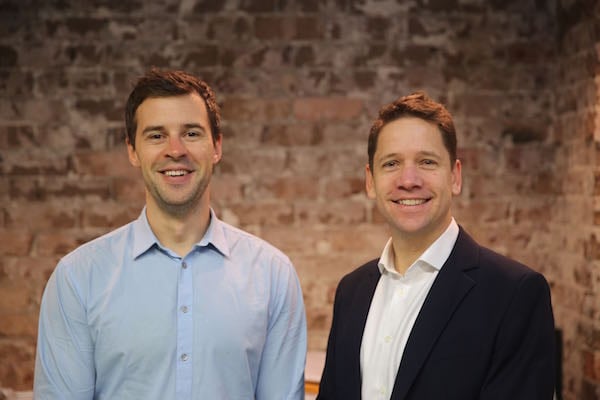 The founders of Disrupt[/caption]
Disrupt
Founders: Gary Elphick and Jason Rogers.
The Disrupt team is customising sports equipment through technology, providing customers with 100% individual sporting equipment such as surfboards. So far, Disrupt has made $600,000 in revenue and announced exclusively at the demo night that it would be opening a European office next month. Disrupt is currently in the middle of raising a $500,000 round of seed funding for the business that will be combined with money from grants that it is also seeking out in various countries around the world. In addition to these achievements, Disrupt has been able to attract some recognisable names to its advisory board including Jodie Fox from Shoes of Prey and Matt Fayle from The Loop.
[caption id="attachment_40576" align="aligncenter" width="600"]
The founders of Disrupt[/caption]
Disrupt
Founders: Gary Elphick and Jason Rogers.
The Disrupt team is customising sports equipment through technology, providing customers with 100% individual sporting equipment such as surfboards. So far, Disrupt has made $600,000 in revenue and announced exclusively at the demo night that it would be opening a European office next month. Disrupt is currently in the middle of raising a $500,000 round of seed funding for the business that will be combined with money from grants that it is also seeking out in various countries around the world. In addition to these achievements, Disrupt has been able to attract some recognisable names to its advisory board including Jodie Fox from Shoes of Prey and Matt Fayle from The Loop.
[caption id="attachment_40576" align="aligncenter" width="600"]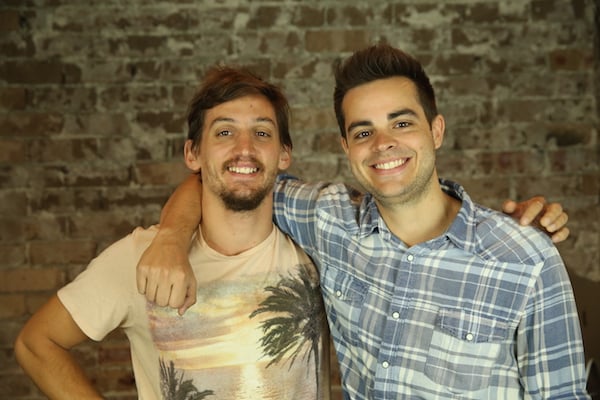 The founders of FanFuel[/caption]
FanFuel
Founders: Daniel Paronetto and Luciano Guasco.
FanFuel's platform connects brands with influential athletes in order to create social media endorsements. Since going live in February, the platform has generated $17,000 in revenue and the startup is now working with Telstra and Sony. The startup also has "tier one" leads in the United States and the founders are currently on a plane and going over to pursue this opportunity. Right now there are over 3,000 athletes that have put themselves on the platform and the founders announced last night that they have opened up a seed funding round in which they aim to raise $380,000.
[caption id="attachment_40577" align="aligncenter" width="600"]
The founders of FanFuel[/caption]
FanFuel
Founders: Daniel Paronetto and Luciano Guasco.
FanFuel's platform connects brands with influential athletes in order to create social media endorsements. Since going live in February, the platform has generated $17,000 in revenue and the startup is now working with Telstra and Sony. The startup also has "tier one" leads in the United States and the founders are currently on a plane and going over to pursue this opportunity. Right now there are over 3,000 athletes that have put themselves on the platform and the founders announced last night that they have opened up a seed funding round in which they aim to raise $380,000.
[caption id="attachment_40577" align="aligncenter" width="600"]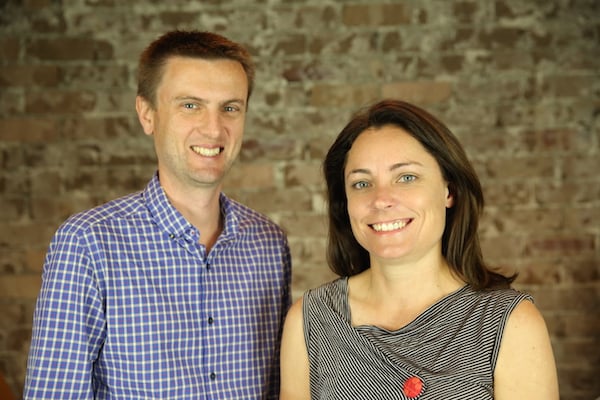 The founders of Freight Exchange[/caption]
Freight Exchange
Founders: Cate Hull and Martyn Hann.
FreightExchange's platform allows empty trucks, ships, planes and trains all around the world to be filled, which saves shippers time and money in managing their freight. Since launching, the startup has made $24,000 in revenue and in its presentation forecasted $1.6 million in projected revenue over the next 12 months. It is important to note that this company concentrates on "line haul" and not "last leg logistics" which is a space that already has a lot of players in it. China represents a huge opportunity for the startup, especially in the space of importing and exporting between Australia and China - these features of the platform will launch in December this year. At the moment Freight Exchange is in the middle of raising a $560,000 seed round.
[caption id="attachment_40579" align="aligncenter" width="600"]
The founders of Freight Exchange[/caption]
Freight Exchange
Founders: Cate Hull and Martyn Hann.
FreightExchange's platform allows empty trucks, ships, planes and trains all around the world to be filled, which saves shippers time and money in managing their freight. Since launching, the startup has made $24,000 in revenue and in its presentation forecasted $1.6 million in projected revenue over the next 12 months. It is important to note that this company concentrates on "line haul" and not "last leg logistics" which is a space that already has a lot of players in it. China represents a huge opportunity for the startup, especially in the space of importing and exporting between Australia and China - these features of the platform will launch in December this year. At the moment Freight Exchange is in the middle of raising a $560,000 seed round.
[caption id="attachment_40579" align="aligncenter" width="600"]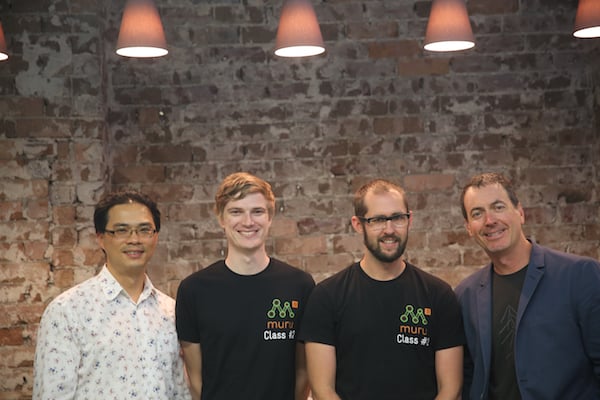 The Instrument Works team[/caption]
Instrument Works
Founder: Dr. Shane Cox.
Instrument Works is developing a new set of tools for managing experiments in research and industrial applications. These tools focus on how users collect and manage data - think of it as an Internet of Things type approach to a laboratory situation. The company's first sensor production run sold out and the startup has closed two major equipment contracts with Australian universities so far. At the moment, Instrument Works is scaling up its manufacturing and distribution processes in China. The startup says it thinks its biggest opportunity will come from the SaaS tools it has developed to assist researchers. The team is currently trying to raise a $500,000 seed round.
[caption id="attachment_40581" align="aligncenter" width="600"]
The Instrument Works team[/caption]
Instrument Works
Founder: Dr. Shane Cox.
Instrument Works is developing a new set of tools for managing experiments in research and industrial applications. These tools focus on how users collect and manage data - think of it as an Internet of Things type approach to a laboratory situation. The company's first sensor production run sold out and the startup has closed two major equipment contracts with Australian universities so far. At the moment, Instrument Works is scaling up its manufacturing and distribution processes in China. The startup says it thinks its biggest opportunity will come from the SaaS tools it has developed to assist researchers. The team is currently trying to raise a $500,000 seed round.
[caption id="attachment_40581" align="aligncenter" width="600"] The founders of SoccorBrain[/caption]
SoccerBrain
Founders: Aron Day and Paul Miller
SoccerBrain's mission is to provide the best technology for sports education. The application enables anyone to be trained in the basics of soccer coaching, something which is currently not systemised and is to the detriment of young school and university aged players because they are not ever able to fully develop their skills. Thus far, the startup has signed up 10 clubs in Australia to the platform, but the biggest opportunity has been discovered during their interactions in China. This has resulted in 280 universities in China rolling out SoccerBrain in June. Because of interest from the Chinese, the startup will be spending a great deal of time there and plans to raise around $5 million in the next 18 months to keep up with its expansion plans throughout the country, targeting the 280,000 soccer clubs and 250 million players they have there.
[caption id="attachment_40582" align="aligncenter" width="600"]
The founders of SoccorBrain[/caption]
SoccerBrain
Founders: Aron Day and Paul Miller
SoccerBrain's mission is to provide the best technology for sports education. The application enables anyone to be trained in the basics of soccer coaching, something which is currently not systemised and is to the detriment of young school and university aged players because they are not ever able to fully develop their skills. Thus far, the startup has signed up 10 clubs in Australia to the platform, but the biggest opportunity has been discovered during their interactions in China. This has resulted in 280 universities in China rolling out SoccerBrain in June. Because of interest from the Chinese, the startup will be spending a great deal of time there and plans to raise around $5 million in the next 18 months to keep up with its expansion plans throughout the country, targeting the 280,000 soccer clubs and 250 million players they have there.
[caption id="attachment_40582" align="aligncenter" width="600"] The founders of Tripalocal[/caption]
Tripalocal
Founders: Jemma Xu and YiYi Wang.
The Tripalocal platform is a marketplace for outbound Chinese tourism focused on local experiences. This startup is another one out of the current muru-D class that will find themselves spending majority of its time based out of China because that is where all its customers are. Xu has been able to get a strong advisory board together that really represent the best in the industry across both Australia and China. In addition, the company has closed a seed funding round of $850,000. The startup will also be announcing in the coming week a new appointment for the business for the position of Chief Operations Officer - it is speculated that this person is one of the senior growth hackers from China based organisation Baidu. Tripalocal will begin to start raising its Series A round with a view to close that by the end of the year, something Xu says is "the usual pace" when raising money in China.
[caption id="attachment_40588" align="aligncenter" width="600"]
The founders of Tripalocal[/caption]
Tripalocal
Founders: Jemma Xu and YiYi Wang.
The Tripalocal platform is a marketplace for outbound Chinese tourism focused on local experiences. This startup is another one out of the current muru-D class that will find themselves spending majority of its time based out of China because that is where all its customers are. Xu has been able to get a strong advisory board together that really represent the best in the industry across both Australia and China. In addition, the company has closed a seed funding round of $850,000. The startup will also be announcing in the coming week a new appointment for the business for the position of Chief Operations Officer - it is speculated that this person is one of the senior growth hackers from China based organisation Baidu. Tripalocal will begin to start raising its Series A round with a view to close that by the end of the year, something Xu says is "the usual pace" when raising money in China.
[caption id="attachment_40588" align="aligncenter" width="600"]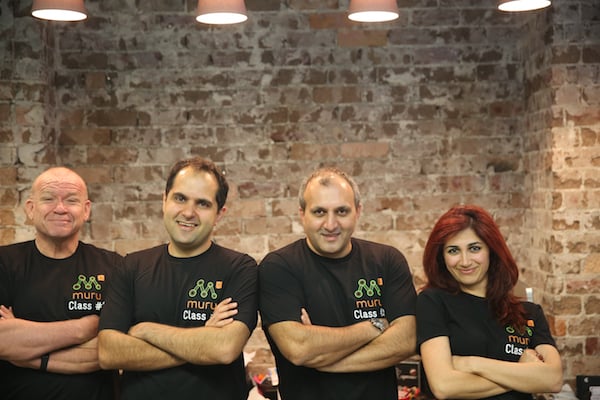 The team at vClass[/caption]
vClass
Founders: Vahid Kolahdouzan, Masoud Kolahdouzan and Shoaleh Baktashi.
vClass allows users to connect, collaborate, share ideas and exchange notes more easily by using pen and paper in real-time. Although it was not announced publicly last night, vClass confirmed with Startup Daily that it has closed a seed round of funding totalling $450,000 that was led by two investors out of Taiwan. In perhaps the biggest sale to come out of any startup in an Australian accelerator program while still in the program, vClass announced that it has $1.8 million in revenue under contract after signing a major customer out of China. Last night, the startup informed the audience it would be opening up a Series A funding round within the next six months - again, like Tripalocal, to service Chinese opportunities.
[caption id="attachment_40591" align="aligncenter" width="600"]
The team at vClass[/caption]
vClass
Founders: Vahid Kolahdouzan, Masoud Kolahdouzan and Shoaleh Baktashi.
vClass allows users to connect, collaborate, share ideas and exchange notes more easily by using pen and paper in real-time. Although it was not announced publicly last night, vClass confirmed with Startup Daily that it has closed a seed round of funding totalling $450,000 that was led by two investors out of Taiwan. In perhaps the biggest sale to come out of any startup in an Australian accelerator program while still in the program, vClass announced that it has $1.8 million in revenue under contract after signing a major customer out of China. Last night, the startup informed the audience it would be opening up a Series A funding round within the next six months - again, like Tripalocal, to service Chinese opportunities.
[caption id="attachment_40591" align="aligncenter" width="600"]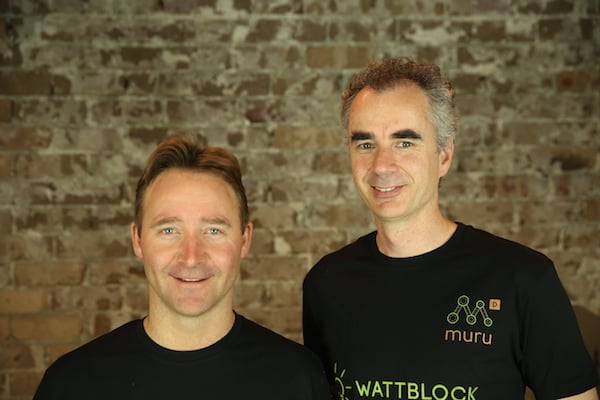 The Wattblock founders[/caption]
Wattblock
Founders: Brent Clark and Ross McIntyre
Wattblock is helping solve the challenges surrounding energy price rises and carbon emissions for residential buildings. Since January, the startup has produced more than 200 online energy reports and started 10 building upgrades including its first high-rise project, a Meriton complex. The team has won a global energy challenge competition that it entered as well as a state sponsored trip to China to meet with key stakeholders in the sector to talk about the product. So far the company has made $30,000 in revenue since launching, and next week, will be flying to the United States where it will meet with Ambassador Kim Beasley to discuss opportunities over there. Wattblock is hoping to raise a $1 million seed funding round.
[caption id="attachment_40594" align="aligncenter" width="530"]
The Wattblock founders[/caption]
Wattblock
Founders: Brent Clark and Ross McIntyre
Wattblock is helping solve the challenges surrounding energy price rises and carbon emissions for residential buildings. Since January, the startup has produced more than 200 online energy reports and started 10 building upgrades including its first high-rise project, a Meriton complex. The team has won a global energy challenge competition that it entered as well as a state sponsored trip to China to meet with key stakeholders in the sector to talk about the product. So far the company has made $30,000 in revenue since launching, and next week, will be flying to the United States where it will meet with Ambassador Kim Beasley to discuss opportunities over there. Wattblock is hoping to raise a $1 million seed funding round.
[caption id="attachment_40594" align="aligncenter" width="530"]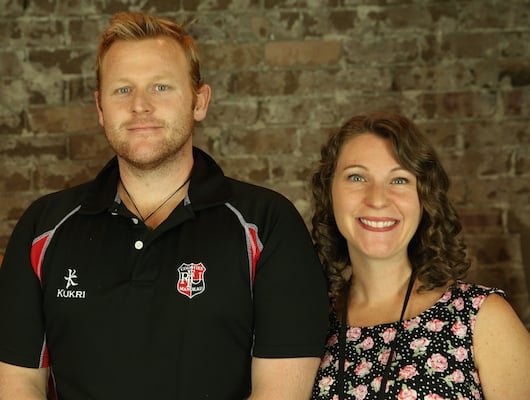 The founders of YouChews[/caption]
YouChews
Founders: Liz Kaelin and Phil Doran
YouChews is on a mission to eradicate stale sandwiches from office catering with its platform that connects companies to the local food scene. Already since launching, the startup has made over $250,000 in revenue from over 100 customers that have used the platform to cater for 400 events. Perhaps the most powerful statistic is that YouChews has a 70% repeat customer rate. Unlike all the other teams in the class, YouChews has chosen to focus solely on the Australian market in order to take a slice of what is a $2 billion opportunity for them. The team announced last night it was raising a seed funding round of $250,000 to help accelerate things to the next level which means a presence in every Australian capital city.
To find out more about the startups that presented at Demo Night, you can connect directly with them via the muru-D website.
The founders of YouChews[/caption]
YouChews
Founders: Liz Kaelin and Phil Doran
YouChews is on a mission to eradicate stale sandwiches from office catering with its platform that connects companies to the local food scene. Already since launching, the startup has made over $250,000 in revenue from over 100 customers that have used the platform to cater for 400 events. Perhaps the most powerful statistic is that YouChews has a 70% repeat customer rate. Unlike all the other teams in the class, YouChews has chosen to focus solely on the Australian market in order to take a slice of what is a $2 billion opportunity for them. The team announced last night it was raising a seed funding round of $250,000 to help accelerate things to the next level which means a presence in every Australian capital city.
To find out more about the startups that presented at Demo Night, you can connect directly with them via the muru-D website.
Melbourne startup creates compact shelters to help house people affected by natural disasters

Competition in Australian online food delivery space heats up as UK giant Just Eat agrees to acquire Menulog for $865 million

Image: Just Eat CEO David Buttress. Credit: Eat Out Magazine.
Hutbitat is taking on two of the biggest companies in Australia; and based in Singapore, that’s going to be pretty hard

Three Singapore based founders Mingwei Leong, Lee Wei and Chee-Wee Khoo are hoping to do just that with their new venture Hutbitat.
Hutbitat is essentially a real estate search engine that aims to improve people's home search experiences. Wei told Startup Daily that when it comes to property search websites, they are usually too cluttered with information and messy to navigate and at times more focused towards investors rather than consumers. While I probably would have agreed with that opinion about five years ago, today the two biggest sites playing in the space are actually pretty easy to navigate - both REA Group and Fairfax have, to their credit, done a brilliant job in upgrading the UI and UX of their websites.
It is also worth noting that Hutbitat appears to be quite similar design wise to another Fairfax owned real estate entity, Commercial Real Estate. In fact, as you can see below, the UI is almost exactly the same apart from a couple of minor key differences.
[caption id="attachment_40621" align="aligncenter" width="800"] Top: Commercial Real Estate and Bottom: Hutbitat search screens[/caption]
Top: Commercial Real Estate and Bottom: Hutbitat search screens[/caption]
The way that Hutbitat works is by pulling data from across the web directly from real estate agency websites. The aim of Hutbitat is to then direct the traffic from its site back to the websites of the agencies. Agencies have to become "Hatbitat Agents" in order to get the advantage of having their details displayed to the public. However, unlike Real Estate and Domain, agencies will not have to manually submit their listings directly to the website or via the widely used My Desktop tool used by property managers.
"The thing about agents is that they do not have to submit any listing to us. We feel that saves them a lot of time and we understand that time is money. That's the main selling point we're trying to push to agents. It will be easy to submit listings," says Wei.
Because listings are pulled via Hutbitat's proprietary algorithm, everything will also be updated in real-time, according to the founders.
The startup is 100% focused on the Australian real estate market, yet the entire team and operations is based in Singapore. Although one of the co-founders on the team lived in Australia for about six years, the location factor could present a problem in gaining traction for the venture simply because, in the real estate industry, to get the big players on board and engaged, you need to have feet on the ground. Having said that, the Hutbitat team just started marketing to local real estate agencies in Australia last week - so its too early to tell whether or not there will be any buy in.
"The core of what Hutbitat is that we will never charge for listings that appear on the website," says Wei. "Where we will make money is in aiming to improve business efficiency of agents. We're trying to develop some tools that will streamline processes and activities for agents".
Basically what Wei is saying is that the big vision behind Hutbitat is that it will be a place where real estate agents end up going because it has a host of tools that will allow them to better manage their sales. This begs the question: why bother building a search engine / two-sided market place when you could just build a suite of tools and concentrate on marketing them directly to the real estate industry? It's early days but I think that there are a lot of factors to be ironed out here before this startup has a fighting chance making it in Australia, especially because they are not based in the country.
Sydney startup wants to provide mentorship to entrepreneurs who can’t afford expensive programs

The unfortunate demise of Ninja Blocks highlights an important issue that founders need to get their heads around

Embark.org allows individuals to host and book personalised adventure travel tours

Bigcommerce launches enterprise-grade platform for high-volume retailers

Melbourne startup Shopping Links wants to facilitate ‘genuine’ relationships between bloggers and brands

Community social network platform Nabo.com acquires event listing site AroundYou

Image: Adam Rigby, Founder of Nabo. Source: Mumbrella.
Startups seem to be a prominent theme at Sydney’s Vivid Festival this year

Mergers and acquisitions round up

Image: Verizon CEO Lowell McAdam. Credit: Zimbio.
Uber hit with billion dollar lawsuit by man who claims Travis Kalanick stole his idea

Percolate just raised a $40 million funding round and now it believes it can take on Oracle and Salesforce

image: Forbes.com